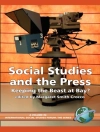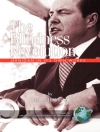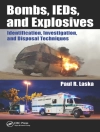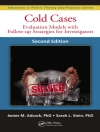‚This book is extremely useful for a broad range of readers. This book reflects the extensive scientific and clinical expertise of the authors and is compelling reading for anyone interested in addictive behaviors. It is one of the rare books that from page one immediately engrosses, educates and broadens your perspective.‘
—Alex Blaszczynski, The University of Sydney, International Journal of Mental Health Addiction
—SCIENTIFIC AMERICAN MIND
‚Harvey B. Milkman and Stanley Sunderwirth have written a tour de force. Craving for Ecstasy and Natural Highs: A Positive Approach to Mood Alteration . . . is a beautifully written and organized book . . . a thrill ride through the most innovative and insightful perspectives that science and clinical experience have to offer . . . hip and artistic, reflecting a deep understanding of addiction . . . a major contribution to the field; it is must reading.’
—Howard J. Shaffer,
Ph D, CAS Editor, Psychology of Addictive Behaviors, Associate Professor, Harvard Medical School Director, Division on Addictions, Cambridge Health Alliance
‚Reading this book is in itself and ecstatic experience! . . . a fascinating journey that explores the benefits and risks of pleasure and the universal desire to feel good . . . It′s quite a trip.’
—G. Alan Marlatt,
Ph D, University of Washington
People from all walks of life often lose themselves in pursuing counterfeit pleasures—cigarettes, alcohol, drugs, thrill seeking, sex, food, gambling, and on-line fantasies to name just a few. How does the pursuit of pleasure result in compulsion and loss of control?
Craving for Ecstasy and Natural Highs addresses this fundamental question and then explores positive ways to achieve lasting happiness and fulfillment. Readers will gain important insight on how to improve their own quality of life and will learn how to offer support to clients, students, family, and friends whose lives may be compromised by addiction.
Students of addictive behaviors and anyone interested in discovering healthy means to satisfy the drive to alter consciousness will find this book compelling.
Reviews of previous work:
‚The chemistry and psychology of addiction are described with considerable insight. . . . These authors know their stuff and make a compelling case.’
—The Los Angeles Times
‚The authors provide a valuable service by placing into perspective a large array of behaviors that could be considered addictive.’
—JAMA
Inhaltsverzeichnis
Prologue
Preface
PART I: THE UNIVERSAL DESIRE TO FEEL GOOD
Introduction
Addiction Syndrome Disorders
Extent of the Problem
Positive Psychology and Natural Highs
Ch 1. Addiction to Experience
The Broad Scope of Addiction
Behavioral Addictions
The Addictive Personality
Who Is Most at Risk?
Acquisition and Maintenance of Reward-Dependent Behavior
Drugs and Activities of Choice
Beacons of Compulsion
Behavioral Excess and the Brain
Mismanaging the Brain
Society and the Deviant Career
Chapter Summary
Ch 2. Pleasure and the Brain
Neurochemistry 101
The Joy of Dopamine and the Reward Cascade
Genes and Drug Abuse – Choose Your Parents Carefully
Drugs to Fight Drugs
Chapter Summary
PART II: FINDING RELIEF AND LETTING GO
Overview: Seeking Safety and Comfort
The Chemistry of Calm
Ch 3. Hey, What′s in This Stuff, Anyway?
Introduction
Inheriting Alcoholism
The Addictive Quality of Alcohol
Neurotransmitter Regulation and Dysfunction
Harmful Effects on the Mind, Body, and Brain
Sobriety and the Brain: What if I Quit?
Coping With Cravings and Urges
Redeeming Alcohol: The Benefits of Booze
Hold the Press, What About Cancer?
To Quit or Not to Quit?
Chapter Summary
Ch 4. The Great Psychiatric Tavern
Who Shows Up and What Do They Do?
Surrogate Family Atmosphere
The ‚Regulars‘
Chapter Summary
Ch 5. Self-Medication
Introduction
Nicotine: The World′s Antidepressant
Alcohol and Drug Abuse Among Women
Posttraumatic Stress Disorder and Self-Medication
Patients in the Street
Prescription Drug Abuse
Inhalants: How Stupid Can You Get?
Chapter Summary
Ch 6. Eating for a Change
Introduction
Anorexia, Bulimia, and Binge Eating
Eating and the Brain
Why Chocolate?
Obesity Around the Globe
Obesity in America
Overeating and Psychoanalysis
Biology Versus Psychology
Chapter Summary
PART III: THE THRILL OF EXCITEMENT AND RISK
Overview: What a Rush!
Ch 7. Stress Hormone Highs
Introduction
Wake Me Up! Caffeine Buzz
Stress Intoxication
Addiction: The Curse of Ecstasy
The Up and Down Game
Problem and Pathological Gambling
Shop ′Till You Drop
Autoerotic Fatalities
Am I a Speed Demon?
Chapter Summary
Ch 8. Rock Around the Clock: Methamphetamine, Cocaine, and the Club Scene
Introduction
Methamphetamine – A Dopamine Blast
Methamphetamine and the Brain
Cocaine: Gift of the Gods
Cocaine and the Brain
Compulsion to Use
The Club Scene
Club Drugs
Chapter Summary
PART IV: MENTAL EXCURSIONS
Overview: Imagination – The Quintessential Human Trait
Electronic Media Everywhere
The Child′s Use of Fantasy
Religion and Myth
Science and Religion
Personal Fantasy
Overview Summary
Ch 9. Virtual Reality and Electronic Bogeymen
Introduction: The Evolution of Electronic Media
Massively Multiplayer Online Role-Playing Games
Online Game Addiction
Is the Internet Good or Bad?
Chapter Summary
Ch 10. Fantasy and the Drug Experience
Introduction: The ‚Trip‘ Begins
Hallucinogens and the Brain
LSD
Dissociative Drugs
Can Hallucinogens Heal?
Chapter Summary
Ch 11. Compelled by Fantasy
Introduction
Shared Delusions
Facilitator-Assisted Fantasy
Schizophrenic Fantasy
The Terrorist Mind-Set
Armageddon: The Ultimate Fantasy
Terror Management
Chapter Summary
PART V: CRAVING FOR INTIMACY
Overview: The importance of Human Connections
Ch 12. Love or Addiction
Infatuation and the Legend of St. Valentine
Neurochemistry of Romance
Love and Death
MDMA: Synthetic Love
Should I Try Ecstasy?
Chapter Summary
Ch 13. Marijuana–Reefer Madness Revisited
′Benefits′ of Pot: Why Do So Many People Smoke?
Effects on the Brain
Withdrawal
Effects on Cognition
Serious Mental Disorder
Marijuana and the Endocrine System
Marijuana and the Immune System
Long-Term Effects on Health
Medical Marijuana
Chapter Summary
Ch 14. Romantic Sex Fantasy
Who Attends and Why
′Intimacy′ at the Gentlemen′s Club
The Allure of Prostitution
Chapter Summary
PART VI: JOURNEY TO OBLIVION
Ch 15. The Voyage of Hardship and Suffering
Introduction: The Disease Concept of Addiction
Addiction and the Adolescent Brain
The Downward Spiral of Addiction
Capsules for Transport: Licit and Illicit Drugs
Behavioral Addictions
The Passenger Sleeps
Symbols of Change
The Robot Pilot
The Mutiny
A Guard Must be Posted
Improving the Odds
Chapter Summary
PART VII: NATURAL HIGHS: THE CUTTING EDGE OF MOOD ALTERATION
Overview: The Era of Self-Regulation and Natural Highs
Ch 16. The Cognitive-Behavioral Revolution: How to Manage Thoughts, Feelings, and Behaviors
Introduction: Evolution of the Cognitive-Behavioral Model
Contemporary Cognitive Therapy
Behaviorist Contributions
Combining Cognitive and Behavioral Theories
Working With Automatic Thoughts and Core Beliefs
The Trans-Ideological Power of Cognitive-Behavioral Restructuring
Cognitive-Behavioral Restructuring in Everyday Life
Chaper Summary
Ch 17. Maintaining Close and Intimate Relationships
Introduction: The Three Faces of Love
The Universal Need for Love
Secure Attachment: A Prototype for Successful Relationships
Healthy Love
Intimacy and Sexuality
Intimacy Versus Individuality
Optimizing Relationships
Chapter Summary
Ch 18. Relaxation, Mindfulness, and Meditation
Introduction: Meditation Comes of Age
Mindfulness
Process Meditation
Does Meditation Work?
Meditation and Hedonic Dependencies
A Word of Caution
Science-Based Relaxation Techniques
Managing Stress in the Here and Now
Chapter Summary
Ch 19: Eating Yourself Fit
Introduction: Does Dieting Work?
The Natural Highs Alternative: Think Thin, Moderate, Workout!
Developing the Right State of Mind
Partial Fasting
What Is a Healthy Diet?
The Bottom Line
Chapter Summary
Ch 20. Exercise: The Magic Bullet
Introduction
Exercise of Choice
The Chemistry of Working Out
Exercise for Body Trimming
Training for Physical Health
Running Away From Depression
Healthy Body, Healthy Mind
Runner′s High: Fact or Fiction?
Make Life a Moving Experience
Chapter Summary
Ch 21. Meaningful Engagement of Talents
Introduction: Capitalizing on Abilities and Strengths
Integrating Models for Self-Discovery and Change
Self-Discovery in Everyday Life
The Personal Pleasure Inventory
Chaper Summary
References
Appendix I: The Personal Pleasure Inventory
Appendix II: Classroom Discussion Guides
Über den Autor
Harvey B. Milkman, Ph D received his baccalaureate degree from City College of New York and his doctorate from Michigan State University. He is currently professor of psychology at Metropolitan State College of Denver. His doctoral research was conducted with William Frosch, MD, at Bellevue Psychiatric Hospital in New York City, on the User’s Drug of Choice. From 1980–1981, he completed a sabbatical exploration of addictive behavior in Africa, India, and Southeast Asia; in 1985 he was recipient of a Fulbright-Hays Lectureship award at the National University of Malaysia. He has represented the United States Information Agency as a consultant and featured speaker in Australia, Brazil, Iceland, The Netherlands, Peru, Turkey, and Yugoslavia. He is principle author with Stanley Sunderwirth of “The Chemistry of Craving, ” and author of “Better than Dope, ” featured articles in Psychology Today, October, 1983 and April, 2001 respectively. From September 1992–June 2002, he was author, principal investigator, and director of Project Self-Discovery: Artistic Alternatives for High-Risk Youth, a national demonstration model funded by The Center for Substance Abuse Prevention and the Edward Byrne Foundation.












